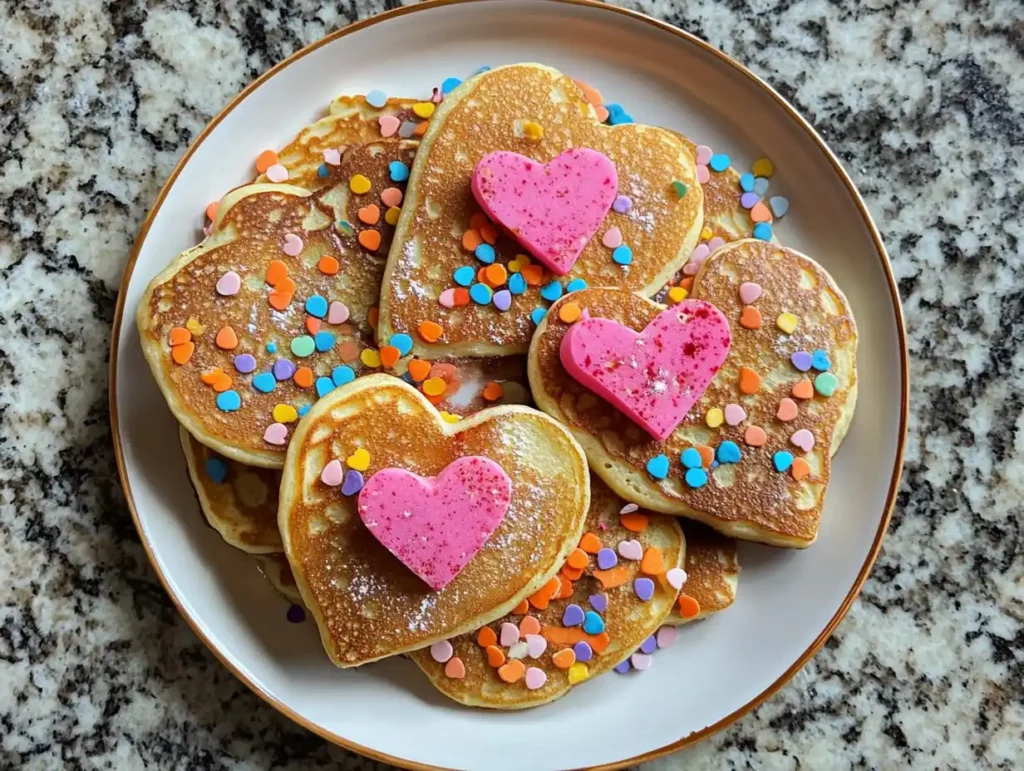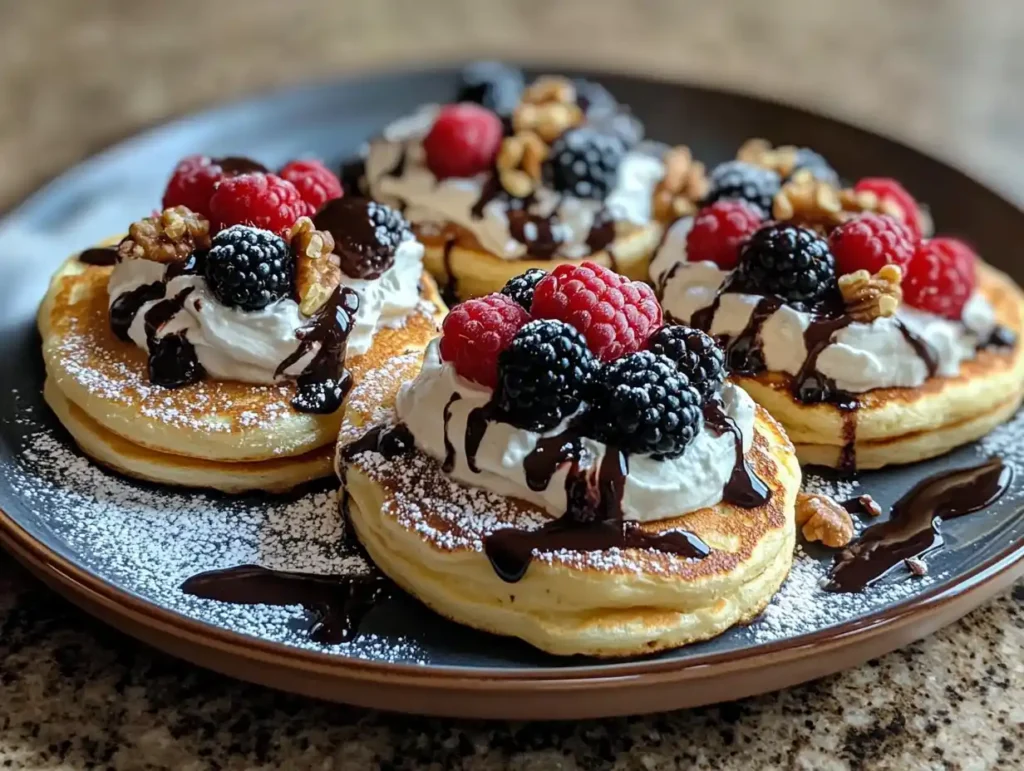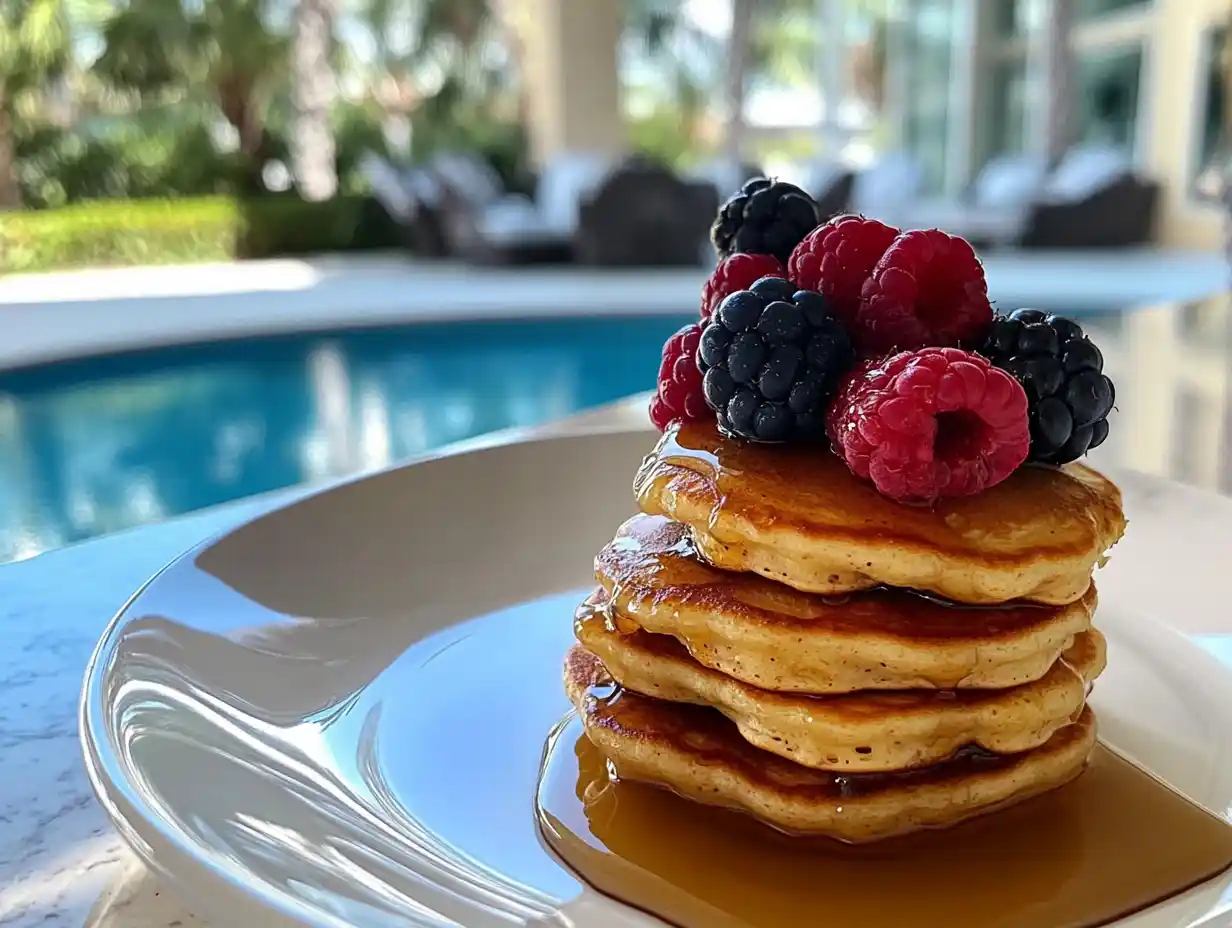Introduction
Learning how to pour small pancakes is a game-changer for breakfast lovers. These perfectly portioned mini pancakes are versatile, easy to make, and fun to customize. Whether you’re serving them as a quick breakfast, a party treat, or a snack for kids, mastering the pouring technique ensures consistent and beautiful results. This guide will walk you through every step of the process, helping you create uniform small pancakes with ease.
Essential Tools for Pouring Small Pancakes
To understand how to pour small pancakes effectively, you need the right tools. These essentials make the process smoother:
- Non-Stick Skillet or Griddle: Prevents sticking and ensures even cooking for your mini pancakes.
- Ladle, Spoon, or Measuring Cup: Helps scoop and pour consistent portions.
- Squeeze Bottle or Piping Bag: Ideal for precise pouring and creating fun pancake shapes.
- Silicone Spatula: Essential for flipping small pancakes without breaking them.
- Mixing Bowl and Whisk: For smooth, lump-free pancake batter preparation.
Having these tools ensures you’re fully equipped to pour small pancakes with precision and ease.
Preparing the Batter
The first step in how to pour small pancakes is making the right batter. A smooth and pourable batter consistency is key for small, uniform pancakes.
Steps to Prepare Perfect Batter
- Select the Right Recipe: Use a pancake recipe with balanced wet and dry ingredients. The batter must flow easily but not be too runny.
- Sift the Dry Ingredients: Sifting flour, baking powder, and sugar removes lumps, ensuring smoother pancakes.
- Mix Wet Ingredients Thoroughly: Combine eggs, milk, and melted butter for a homogenous mixture.
- Gently Mix Together: Stir the wet and dry ingredients until just combined. Overmixing leads to dense pancakes.
- Test the Consistency: The batter should pour easily without clumping. If it’s too thick, add a splash of milk; if too runny, sprinkle in a bit more flour.
Choosing the Right Pan and Heat
One of the critical aspects of learning how to pour small pancakes is choosing the right pan and temperature. Here’s what you need to know:
- Pan Size Matters: A flat, non-stick griddle or skillet provides ample space for multiple small pancakes.
- Set the Right Temperature: Medium heat works best. Too high, and your pancakes might burn; too low, and they won’t cook evenly.
- Grease Lightly: Use a small amount of butter or oil to ensure a non-stick surface.
Preheating the pan properly is a must when you pour small pancakes. A quick test is to sprinkle water drops on the pan. If they sizzle and evaporate quickly, you’re ready to go!
Using a Pouring Method
Understanding how to pour small pancakes involves mastering the technique. Choose from the following methods:
Spoon or Ladle Method
- Use a small ladle or tablespoon to scoop batter and gently pour it onto the pan. Keep your hand steady for even circles.
Squeeze Bottle Method
- Fill a squeeze bottle with pancake batter and squeeze gently to form uniform pancakes. This is one of the easiest ways to pour small pancakes.
Piping Bag Method
- Fill a piping bag, snip the tip, and squeeze directly onto the pan. This method gives excellent control for pouring consistent pancakes.
For all methods, keep the pouring tool close to the surface of the pan to avoid batter splatter.
Tablespoon or Ladle Method
- How to Use: Scoop batter using a tablespoon or small ladle, then carefully drop it onto the pan to form small circles.
- Advantages: Simple and effective if you don’t have additional tools.
- Tip: Keep the spoon close to the surface of the pan to prevent batter splatter.
Spatula and Flip Timing
Flipping small pancakes requires careful timing and technique. Here’s how to do it like a pro:
1. Look for Bubbling
- Wait until bubbles form on the surface of the pancake and the edges start to set. This is the best indicator that it’s ready to flip.
2. Use a Thin Silicone Spatula
- Slide the spatula gently under the pancake and lift with a swift but steady motion.
- A thin spatula minimizes the risk of breaking the pancake.
3. Flip in One Motion
- Turn the pancake quickly to avoid batter spillage or uneven flipping.
4. Cook the Other Side
- Cook for another 30-60 seconds, or until the underside is golden brown.
Creative Shapes and Sizes

Small pancakes don’t have to be plain circles. Use these ideas to add flair:
- Shapes: Create fun designs like hearts, stars, or letters using squeeze bottles or piping bags.
- Mini Pancake Stacks: Pour tiny pancakes (coin-sized) for an adorable stack.
- Uniform Sizes: Use a round cookie cutter on the pan for perfect edges (ensure it’s heat-resistant).
Common Mistakes to Avoid
Pouring and cooking small pancakes can come with a few challenges. Avoid these common mistakes for perfect results:
1. Batter Too Thick or Runny
- Problem: Batter that’s too thick won’t spread properly, and runny batter makes thin, uneven pancakes.
- Solution: Adjust the consistency by adding small amounts of milk or flour to balance the texture.
2. Overcrowding the Pan
- Problem: Pouring too many pancakes at once makes flipping difficult and can lead to uneven cooking.
- Solution: Leave enough space between each pancake for easy flipping.
3. High Heat
- Problem: Cooking on high heat burns the exterior while leaving the center undercooked.
- Solution: Stick to medium heat and monitor the cooking process closely.
4. Flipping Too Soon
- Problem: Flipping before the edges set can cause batter to spill or break.
- Solution: Wait until bubbles form and the edges look firm before flipping.
Tips for Even Cooking
Achieving evenly cooked pancakes requires attention to detail. Here’s how to get it right:
- Preheat the Pan Properly:
- Always preheat your skillet or griddle before adding the batter. Even heat distribution ensures consistent cooking.
- Light Greasing:
- Use a small amount of butter or oil to prevent sticking without overwhelming the batter.
- Use Consistent Portions:
- Measure the batter for each pancake to ensure uniform sizes and even cooking.
- Monitor Cooking Time:
- Cook each side for 1-2 minutes. Adjust slightly based on your stove and pan type.
Mini Pancake Topping Ideas

Small pancakes are versatile and pair well with various toppings. Here are some creative ideas:
1. Classic Favorites
- Butter and maple syrup.
- A sprinkle of powdered sugar.
2. Fruity Additions
- Fresh berries (blueberries, raspberries, or sliced strawberries).
- Sliced bananas or caramelized apples.
3. Nutty and Sweet
- Nutella or peanut butter drizzle.
- Chopped nuts like walnuts, almonds, or pecans.
4. Dessert-Inspired Toppings
- Whipped cream and chocolate chips.
- A drizzle of honey and a sprinkle of cinnamon.
5. Healthy Options
- Greek yogurt with granola.
- A dollop of cottage cheese and fresh fruit.
Cleaning Up After Pancake Making
Making small pancakes is fun, but the aftermath can sometimes feel like a chore. With these simple cleaning tips, you’ll have your kitchen spotless in no time:
1. Pre-Soak Utensils and Bowls
- Why It’s Important: Batter tends to dry and stick to bowls, whisks, and spatulas.
- How to Do It: Fill your mixing bowl with warm, soapy water immediately after use and soak tools for easier cleaning.
2. Non-Stick Pan Care
- Avoid Abrasives: Use a soft sponge or cloth to clean the non-stick surface. Harsh scrubbers can damage the coating.
- Tip: If residue builds up, boil a little water with dish soap in the pan, then rinse thoroughly.
3. Surface Wipe-Down
- Pancake splatters happen! Use a damp cloth with a gentle cleaner to wipe down countertops and your stove.
4. Squeeze Bottle or Piping Bag Cleaning
- For squeeze bottles, fill them with warm, soapy water, shake well, and rinse thoroughly.
- For piping bags, turn them inside out and wash them in soapy water, or use disposable ones to save time.
5. Grease Splatter Solution
- If your pan grease splattered, sprinkle baking soda on greasy areas, scrub gently with a damp cloth, and wipe clean.
FAQ Section: Your Pancake Questions Answered
1. How do I ensure all my pancakes are the same size?
- Use a squeeze bottle, piping bag, or a small ladle for controlled portions. Measuring spoons (e.g., 1 tablespoon) also help with consistent size.
2. Can I make pancake batter ahead of time?
- Yes, you can! Store the batter in an airtight container in the fridge for up to 24 hours. Stir gently before using, as ingredients may separate.
3. What’s the secret to fluffy small pancakes?
- Use fresh baking powder, avoid overmixing the batter, and let it rest for 5-10 minutes before pouring to allow the leavening agents to activate.
4. Why do my pancakes stick to the pan?
- This can happen if the pan isn’t preheated properly or if it isn’t greased enough. Always use a non-stick pan and lightly grease it before cooking.
5. Can I make gluten-free small pancakes?
- Absolutely! Substitute all-purpose flour with a gluten-free mix or almond flour. Ensure the batter has the right consistency for pouring.
6. How do I keep small pancakes warm while cooking multiple batches?
- Place cooked pancakes on a baking sheet in a 200°F (93°C) oven to keep them warm without drying out.
Related Tips for Making Small Pancakes
For more pancake inspiration and techniques, check out the following resources on GreedyRecipes:
- How Long Do You Cook Mini Pancakes For? provides a guide to achieving the perfect texture and consistency.
- Mini Pancakes: The Ultimate Guide to Making Bite-Sized Breakfast Treats offers insights on pouring techniques, batter preparation, and creative serving ideas.
These articles complement the discussion on pouring small pancakes and will enhance your breakfast-making experience.
Conclusion
Making small pancakes is a delightful and rewarding experience. By following the right steps using proper tools, achieving the perfect batter consistency, and mastering the flipping technique you’ll consistently create perfectly shaped and evenly cooked mini pancakes. Whether you enjoy them plain, stacked, or adorned with creative toppings, they’re sure to bring joy to your breakfast table. With these tips, even beginners can whip up small pancakes like a pro!
